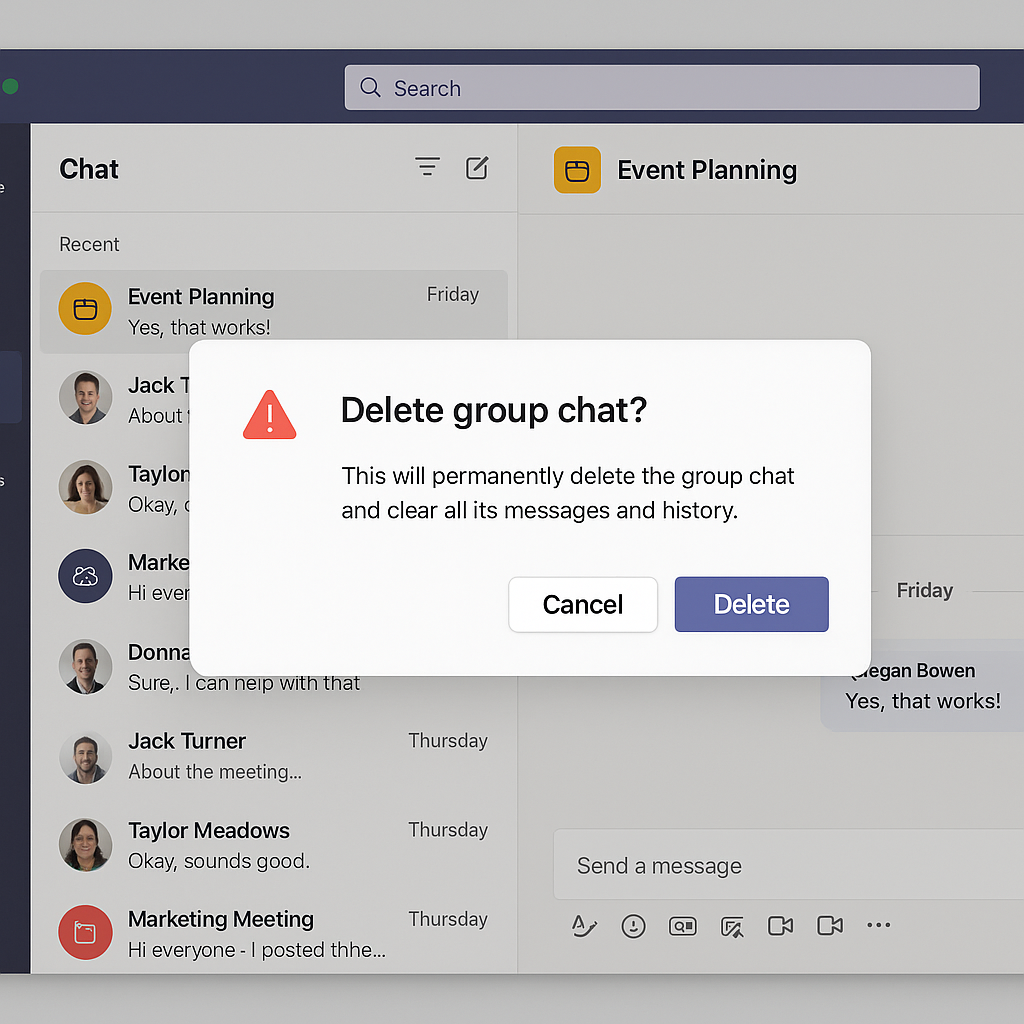Can I truly delete messages I’ve already sent in Teams?
I accidentally sent a message with sensitive information to the wrong channel in Teams. Now I need to remove it quickly before others see it. Is there a way to delete messages I’ve already sent in Microsoft Teams? If I delete a message, can others still see it somehow? Are there any limitations to deleting messages in different types of conversations?
Understanding Teams message deletion limitations and options
Message deletion in Microsoft Teams helps maintain communication clarity and information security. Removing incorrect, outdated, or sensitive information prevents confusion and potential data exposure. Microsoft Teams offers various deletion capabilities depending on your role, the conversation type, and organizational policies.
Different deletion options exist for private chats, group conversations, and channel messages. Understanding these distinctions helps you manage your communications effectively.
Message deletion capabilities across Teams conversation types
Before attempting to delete a message in Microsoft Teams, you should understand what’s possible. The ability to delete messages varies based on several factors:
- Personal chat messages can be deleted by the sender with fewer restrictions compared to channel messages
- Channel messages may have deletion limitations based on team settings and your role
- Group chat messages follow similar rules to personal chats but affect multiple recipients
- Organizations may implement custom retention policies that override default deletion capabilities
- Deleted messages may still appear in compliance records depending on your organization’s settings

Deleting messages in Microsoft Teams
Deleting messages in personal and group chats
- Access the message you want to delete by opening the relevant chat or conversation where the message was sent, scrolling up if necessary to locate the specific message.
- Hover over the message with your cursor until the emoji reaction bar appears, then look for the three-dot menu icon (more options) that appears to the right of your message.
- Click the three-dot menu and select “Delete” from the dropdown menu that appears, which will prompt you to confirm your deletion action.
- Confirm deletion by clicking “Delete” in the confirmation dialog box that appears, understanding that while deleted for appearance, recipients may have already seen the message.
- Verify deletion by noting that the message will be replaced with a notification indicating “[This message has been deleted]” so others know content was removed.
Remove messages in Teams channels
- Navigate to the channel where you posted the message by selecting the appropriate team and then clicking on the specific channel from the list.
- Locate your message within the conversation thread, which might require scrolling through previous messages if the channel has been active since your post.
- Click the three-dot menu (more options) that appears when you hover over your message, revealing several actions you can take on this specific message.
- Select “Delete” from the menu options and confirm your choice when prompted, noting that channel message deletions may be visible to team administrators.
- Be aware of permissions as team owners may have configured settings that restrict regular members from deleting their messages after they’ve been posted.
Recalling messages in Microsoft Teams
- Act quickly as message recall works best when attempted immediately after sending, before recipients have had a chance to read your message.
- Use the edit function instead of deletion if you only need to correct a minor error, as this preserves the message history while fixing the content.
- Click the three-dot menu beside your message and select “Edit” to modify the content rather than removing it entirely from the conversation.
- Replace sensitive content with generic text if editing, rather than leaving blank spaces, to maintain conversation context while removing the problematic information.
- Send a follow-up message if the original can’t be deleted or edited, clarifying any misunderstandings or providing corrected information to all participants.
Teams message deletion issues
- Unable to delete messages: If the delete option doesn’t appear in the menu, your organization might have implemented policies restricting message deletion, requiring you to contact your IT administrator for assistance.
- Message shows as deleted but still visible: Some recipients might have already viewed the message before deletion, or they may be viewing a cached version, which will eventually update to show the deletion notice.
- Administrator can still see deleted messages: Teams administrators and compliance officers can access deleted messages through eDiscovery tools even after you’ve removed them, as part of organizational compliance requirements.
- “Delete” option missing in channels: Team owners can restrict message deletion capabilities for members, so if you can’t delete a channel message, you’ll need to request the team owner to either delete it for you or adjust permissions.
- Messages reappearing after deletion: This typically indicates a synchronization issue between your client and Microsoft servers, which can usually be resolved by refreshing the Teams application or signing out and back in.
- If you’re experiencing issues with message deletion, it might be related to synchronization problems. Similar to when Teams folders are not syncing properly, you may need to refresh your client or check your connection to resolve these issues.
